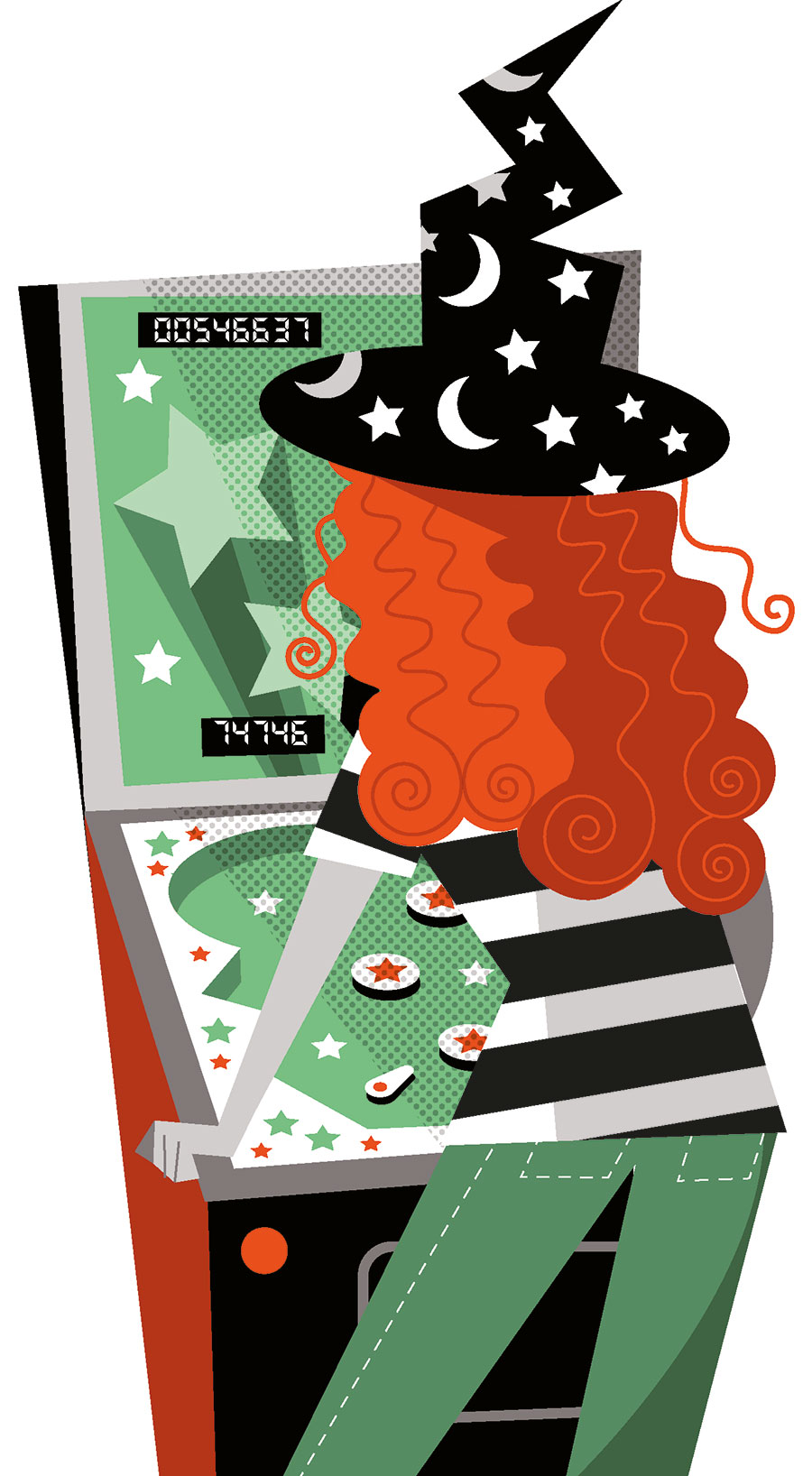
When play begins during my visit to the Chicago chapter of the women’s-only pinball league Belles & Chimes, my opponent looks over at me and notes my general confusion. “Wait,” she says. “You don’t know anything about pinball?”
I don’t.
I was about 8 the last time I played, frantically hitting the flippers with little rhyme or reason. Tonight I yearn to recapture the singular focus it takes to keep a ball in play. I’m matched up against players with far more prowess. One of the chapter founders once reached No. 15 in the International Flipper Pinball Association’s women’s rankings. (Yes, that’s a real thing.)
During a Belles & Chimes match, groups of four compete against each other at six different machines. The league meets every other Wednesday at Logan Arcade and is open to everyone from first-timers to pros. It’s mostly populated by regulars, one of whom, on this night, shows up dressed as Gozer the Gozerian. Apparently, she spent the day at the Elk Grove Village headquarters of Stern Pinball, one of the country’s biggest pinball machine manufacturers, appearing in a video promoting its Ghostbusters machine. I’m clearly among pinball wizards.
The main skills of good players, it turns out, are concentration and an attention to the nuances of each machine. Naomi, Poe, and Tavi, the ladies I’m playing against, generously break down each one, noting where the major points can be scored, how to trigger multiball play, and how hard or soft I should launch the ball to get a bonus out of the gate. Poe has mastered the art of subtly bumping the table — enough so that it makes a difference, not so much that it registers as a tilt and ends her turn. Tavi’s ball goes down the drain, the area below the flippers, much more quickly than mine, yet she racks up more points. As I look on, baffled, the women explain that while my strategy of keeping the ball in play as long as possible is a decent start, it’s not a winning long-term plan.
I settle into a rhythm and find myself getting increasingly frustrated when I lose a ball and have to step away. There’s a moment while we’re playing the Addams Family machine that I hit my ball directly into the electric chair — a major point haul — and then I’m in the zone, at one with the flippers. It doesn’t last long, but it gives me an understanding of the game’s appeal. It takes real focus, which means you can’t be thinking about to-do lists or unanswered emails. It’s also something you can start playing at 37 and still hope to get really good at — with lots of practice.
At the end of each round, whoever comes in first gets 5 points. Second place gets 3; third, 2; and fourth, 1. The lowest possible score, if you come in last every round, is 6. At the end of the night I score … an 8. For those of you following along at home, this means I came in third twice. To put it another way, there were two times I DIDN’T COME IN LAST.
This feels like a victory. While I’m not ready to join a league, it makes me want to keep playing. There’s got to be an app for that.


